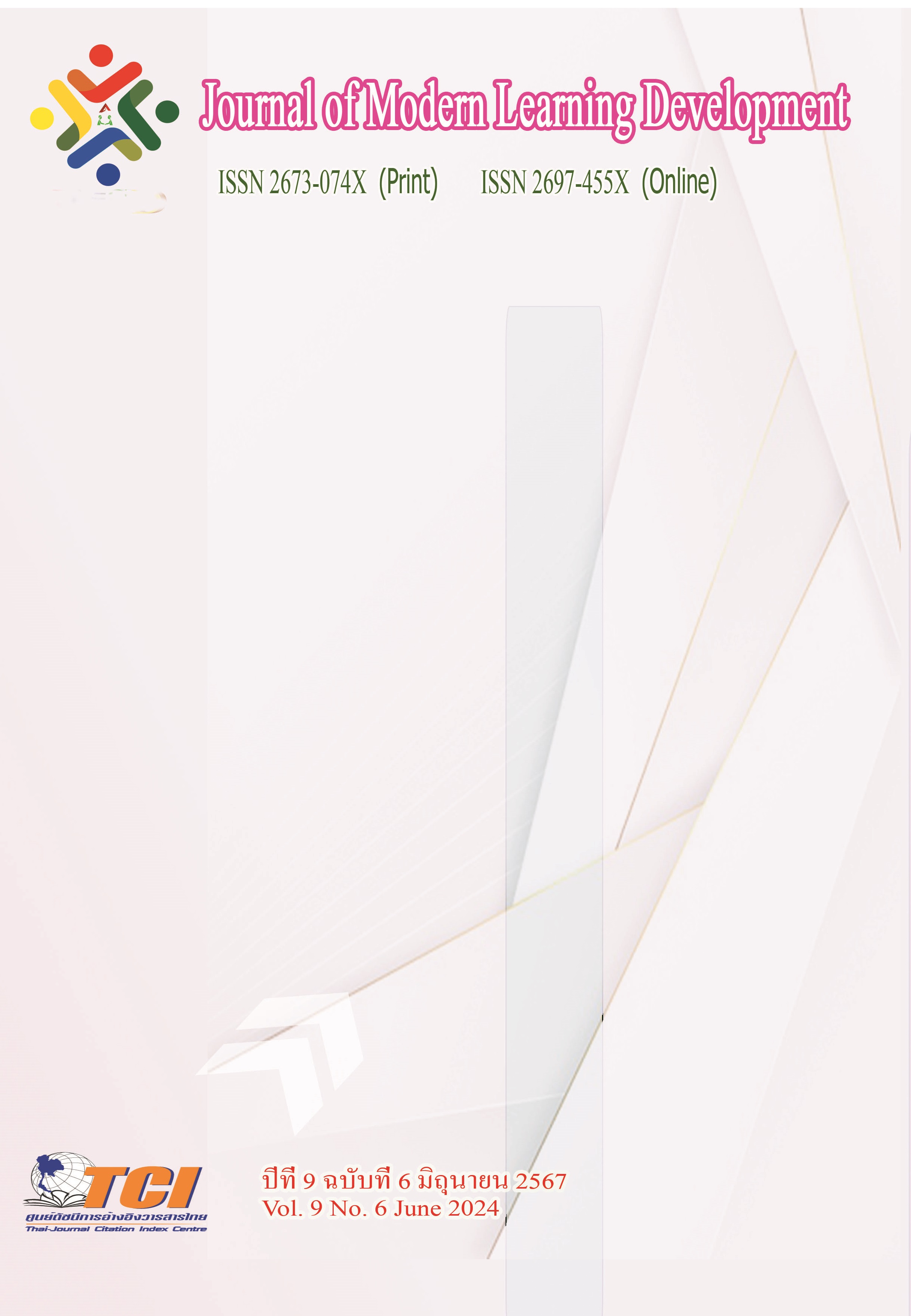Guidelines for the 21st Century Skills Development of Personnelof the Provincial Prison in Region 7
Main Article Content
Abstract
The researcher is interested in studying the Guidelines for the 21st Century Skills Development of Personnel of the Provincial Prison in Region 7that will lead to the effective development of skills and knowledge in the work of personnel. Therefore, the study was conducted the mix-method research aimed to study (1) the level of the 21st Century skills development of personnel of the Provincial Prisons in Region 7, (2) a correlation between factors affecting the 21st Century skills development of personnel of the Provincial Prisons in Region 7, (3) a relationship between factors affecting the 21st Century skills development and the 21st Century skills development of Personnel of the Provincial Prisons in Region 7, and (4) guidelines for developing the 21st Century skills of personnel of the Provincial Prisons in Region 7. The sample groups consisted of 202 personnel working for the Provicial Prisons in Region 7 and 9 key informants by using probability sampling and a simple random sampling method.
Finding: (1) as a whole, the level of the 21st Century skill development of personnel of the provincial prisons in Region 7 was at a high level, (2) there was no correlation between factors affecting the 21st Century skills development and the 21st Century skills development, (3) there were relationships between factors affecting the 21st Century skills development in terms of success, career path, and job characteristics at the statistically significant level of 0.001 and there was no relationship for being respected and opportunity to take responsibility factors, and (4)guidelines for developing the 21st Century skills of Personnel of the Provincial Prisons in Region 7 were revealed that the prisons should: create integrated brainstorming, encourage personnel to express ideas, respect work colleagues, be flexible, and learn to use new technology to work operation.
Article Details
References
จิณห์นภา รอดมี. (2553). คุณภาพชีวิตของเจ้าหน้าที่เรือนจำ : ศึกษาเฉพาะกรณีจังหวัดปัตตานี จังหวัดยะลา และจังหวัดนราธิวาส. วิทยานิพนธ์ศิลปศาสตรมหาบัณฑิต. บัณฑิตวิทยาลัย: มหาวิทยาลัย เกษตรศาสตร์
ธนสิน จันทเดช.(2564).ท่องเที่ยววิถีใหม่ในรูปแบบวิถีท่องเที่ยวไทย.วารสารราชภัฏสุราษฎร์ธานี. 8 (2),1-16.
พิชากรณ์ เพ่งพิศ. (2561). ปัจจัยที่ส่งผลต่อทักษะของผู้เรียนในศตวรรษที่ 21 ของนิสิตระดับปริญญาตรีมหาวิทยาลัยเกษตรศาสตร์; บัณฑิตวิทยาลัย สุพรรณบุรี. วิทยานิพนธ์ศึกษาศาสตรมหาบัณฑิต. บัณฑิตวิทยาลัย: มหาวิทยาลัยศิลปากร.
แมนพาวเวอร์กรุ๊ป ประเทศไทย. (2564). 10 ทักษะแรงงานยุคโควิดต้องมี. ออนไลน์. สืบค้นเมื่อ 1 กรกฎาคม2564. แหล่งที่มา: https://www. manpowerthailand. com/th/blog/2020/12/skill-must-have-incovid-era-th.
วศิน ชูชาติ. (2559). ปัจจัยที่ส่งผลต่อความสามารถในการจัดการเรียนรู้ ของครูเพื่อส่งเสริมทักษะการเรียนรู้ของผู้เรียนแห่งศตวรรษที่ 21 จังหวัดสุพรรณบุรี . วิทยานิพนธ์ศึกษาศาสตรมหาบัณฑิต. บัณฑิตวิทยาลัย: มหาวิทยาลัยศิลปากร.
สมเกียรติ ตั้งกิจวานิชย์ และคณะ. (2556). ปฏิรูปการศึกษาขั้นพื้นฐานเพื่อการเรียนรู้ แห่งศตวรรษที่21. กรุงเทพมหานคร: สํานักงานสถิติแห่งชาติ.
สมชัย ศรีสุทธิยากร. (2563). 15 - 21 พฤษภาคม 2563. มติชนสุดสัปดาห์.
สมสกุล เทพประทุน. (2561). แนวทางการพัฒนาทักษะในศตวรรษที่ 21 ของผู้เรียนในสถานศึกษานําร่องลดเวลาเรียนเพิ่มเวลารู้ในอําเภอบ้านโป่ง. วารสารการบริหารการศึกษา มหาวิทยาลัยศิลปากร. 9 (2), 124-138.
สํานักงานเลขาธิการสภาการศึกษา. (2553). ข้อเสนอการปฏิรูปการศึกษาในทศวรรษที่สอง(พ. ศ.2552-2561). กรุงเทพมหานคร: สํานักงานเลขาธิการสภาการศึกษา
อ้อมใจ พลกายา. (2561). ความพึงพอใจในงานและทักษะแห่งศตวรรษที่21ของบัณฑิตวิทยาลัยพยาบาลบรมราชชนนี จักรีรัช. วารสารศาสตร์ การศึกษาและการพัฒนามนุษย์. 2 (2),69-78.
Guo, J., & Woulfin, S. (2016). Twenty-first century creativity: An investigation of how the partnership for 21st century instructional framework reflects the principles of creativity. Roeper Review. 38 (3), 153-161.
Herzberg, F., Mausner, B., &Synderman, B. (1959). The motivation to work. New York: John Wiley and Sons.
Rosefsky Saavedra, Anna (2010). Nine Lessons on How to Teach 21st Century Skills and Knowledge. By Anthony Jackson on October 24, 9-12.
Yamane, T. (1970). Statistics: An introductory analysis. (2rd ed.). Tokyo: John Weatherhill.


